#CopperCables
Explore tagged Tumblr posts
Text
Get better performance and reliability with MTK International's premium copper cables. Our cables are made from only copper material and are designed to maximize conductivity and durability in applications from commercial and residential to industrial power distribution. We offer a wide variety of cable types you'll need to meet international standards, making sure some level of efficiency and safety is included in every installation. From flexible cable to multi-core to armored copper cable, MTK International is the premium copper cable solution for your project. We know our stuff and can provide you with the best 'power' for your installations using our copper cables - delivering reliability and precision. Take a look at MTK International's quality copper cabling solutions, combined with high-level engineering.
#CopperCables#ElectricalWiring#CableManagement#DIYElectronics#HomeWiring#TechTips#Conductivity#ElectricalEngineering#WireConnections#IndustryStandards#SustainableTech#ElectricalProjects#CopperWire#CableInstaller#Electronics#Innovation#CablingSolutions#DIYProjects#SmartHome#WiringDiagrams
0 notes
Text
Understanding Copper Cables: The Backbone of Traditional Networking
When it comes to networking and electrical connections, copper cables have long been the standard for transmitting data and power. Despite the rise of newer technologies like fiber optics, copper cables continue to play a vital role in many industries and applications. Whether you're wiring a home, connecting office networks, or setting up industrial systems, copper cables remain an integral part of the infrastructure.
In this blog, we’ll explore what copper cables are, the different types available, their advantages, and how they are used in today’s world of networking and telecommunications.
What Are Copper Cables?
Copper cables are electrical cables that use copper as the conductor. Copper, known for its excellent electrical conductivity, has been the go-to material for cables since the invention of the telegraph in the 19th century. Copper cables are used to carry electrical signals, power, or data between devices, buildings, or systems. Copper’s ability to conduct electricity efficiently makes it ideal for many types of communication and electrical applications.
Copper cables come in different forms, including twisted pair cables, coaxial cables, and bare wires, and each type serves a specific function. The most common copper cables used in networking today are Ethernet cables (twisted pair), used to connect computers and other devices in local area networks (LANs).
Types of Copper Cables
There are several types of copper cables, each suited for specific applications. Let's take a look at the most common ones:
1. Twisted Pair Cables
Twisted pair cables are the most common type of copper cables used in networking. They consist of pairs of copper wires twisted together to reduce electromagnetic interference (EMI). There are two primary types of twisted pair cables:
Unshielded Twisted Pair (UTP): UTP cables have no additional shielding to protect the wires. They are commonly used in Ethernet networks and are cost-effective and easy to install. Common categories of UTP cables include Cat5e, Cat6, and Cat6a.
Shielded Twisted Pair (STP): STP cables have additional shielding around the wires to further reduce EMI and crosstalk between pairs of wires. STP cables are more expensive than UTP cables but offer better performance in environments with high interference.
2. Coaxial Cables
Coaxial cables, often referred to as coax cables, consist of a central conductor (typically copper) surrounded by insulation, a metal shield, and an outer insulating layer. Coax cables are typically used for carrying cable television signals, broadband internet, and other high-frequency signals. They are robust, resistant to interference, and capable of transmitting data over longer distances than twisted pair cables.
3. Bare Copper Wires
Bare copper wires are simply uninsulated copper wires used in a variety of electrical applications. These wires are typically used for electrical power transmission and can be found in everything from household wiring to industrial systems. Since these wires have no insulation, they are only used in controlled environments or when the wire’s insulation will be added later.
Advantages of Copper Cables
While newer technologies like fiber optic cables have started to dominate certain areas of communication, copper cables continue to offer several key advantages:
1. Cost-Effective
Copper cables are generally more affordable than fiber optic cables, making them a budget-friendly option for home networks, small businesses, and even some larger industrial applications. The materials for copper wiring are widely available, and the installation process is often simpler and less expensive than fiber optic setups.
2. Easy to Install
Copper cables, particularly twisted pair cables (such as Ethernet cables), are easy to install and maintain. They are flexible, lightweight, and come with standardized connectors, which makes them simple to terminate without the need for specialized tools or training.
3. Well-Understood Technology
Copper cables have been around for a long time, and as a result, they have become a well-understood and trusted technology. There is a vast amount of knowledge and expertise regarding copper cable installations, and troubleshooting issues with copper cables is straightforward.
4. Reliability
Copper cables provide reliable data transmission with minimal signal degradation over short to medium distances. While fiber optics excel over long distances, copper cables are more than sufficient for most home and office networks, where distances typically don’t exceed a few hundred feet.
5. Compatibility
Copper cables, particularly Ethernet cables, are highly compatible with most networking equipment, including routers, switches, and computers. Their plug-and-play nature has made them a standard choice for local area networks (LANs).
6. Power Delivery
Copper cables are capable of carrying both data and electrical power, which is why they are commonly used in applications like Power over Ethernet (PoE). PoE allows electrical power to be transmitted through the same copper Ethernet cable that carries data, which can simplify the wiring requirements for devices like IP cameras, phones, and access points.
Applications of Copper Cables
Copper cables are used in a wide variety of applications, ranging from networking to power transmission. Some of the most common uses include:
1. Local Area Networks (LANs)
Ethernet cables, made from twisted copper pairs, are the foundation of most wired local area networks. They connect computers, printers, switches, routers, and other devices within homes, offices, and data centers, allowing for fast data transfer and reliable communication.
2. Broadband Internet
Coaxial copper cables are commonly used to deliver broadband internet services to homes and businesses. They are used by cable providers to connect customer premises to the broader internet infrastructure.
3. Telecommunications
Copper cables are used extensively in telecommunications networks, particularly for traditional telephone lines (landlines). Even though much of the telecommunications industry is shifting toward fiber optics, copper remains in use for many legacy systems.
4. Video and Audio Transmission
Coaxial cables are also used to transmit video and audio signals, particularly in older television systems and CCTV camera setups. They are also used in some audio/video installations for home entertainment systems.
5. Power Distribution
Bare copper wire is used in power distribution systems, where electrical power is transmitted from one location to another. These wires can be found in everything from household electrical systems to large-scale industrial power grids.
Limitations of Copper Cables
While copper cables have many advantages, they also come with some limitations compared to newer technologies like fiber optics:
1. Limited Bandwidth and Speed
Copper cables, especially twisted pair cables, are limited in terms of the bandwidth and speed they can support. While high-performance copper cables like Cat6 or Cat6a can support speeds of up to 10 Gbps, fiber optics are capable of delivering much higher speeds over long distances.
2. Signal Degradation Over Distance
Copper cables experience signal loss over long distances due to the electrical resistance of the copper material. This means that copper cables can only be used effectively for relatively short to medium distances (usually up to 100 meters for Ethernet cables) before the signal starts to degrade.
3. Electromagnetic Interference (EMI)
Copper cables can be susceptible to electromagnetic interference, which can cause data transmission errors. While twisted pair cables help reduce EMI, it still poses a challenge in environments with high electrical noise.
Conclusion
Copper cables have been an essential part of the electrical and networking infrastructure for decades, and they continue to offer significant advantages in terms of cost, ease of installation, and compatibility. Whether you’re setting up a home network, installing a power system, or managing a telecommunications network, copper cables remain a reliable and affordable choice for many applications.
While newer technologies like fiber optics are gaining ground, especially in areas requiring high-speed, long-distance data transmission, copper cables will continue to be integral to our digital and electrical systems for the foreseeable future. By understanding the strengths and limitations of copper cables, you can make informed decisions about which type of cabling is best suited for your needs, ensuring a robust and effective network or electrical setup.
1 note
·
View note
Text
0 notes
Text
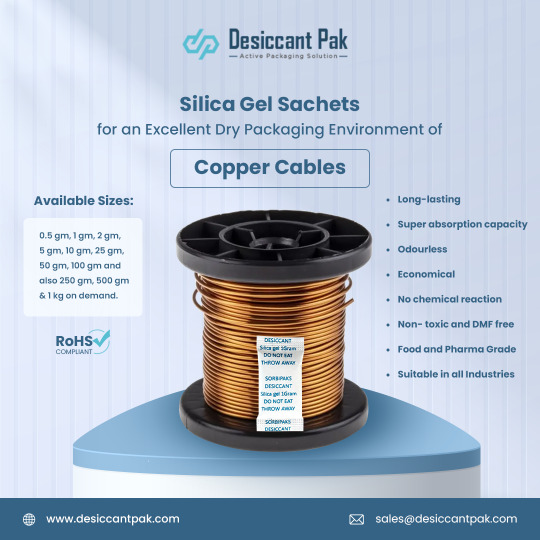
Still, your copper cable packaging is damaged by moisture?
Using our silica gel sachets, it has the power to effectively remove moisture and protect the cables from getting damaged with improper packaging.
It can act as a dehydrating element that keeps the wires moisture-free.
Checkout some amazing features of Sorbipaks Silica Gel Packets:
• Long-lasting
• Super absorption capacity
• Odourless
• Economical
• No chemical reaction
• Non- toxic and DMF free
The available sizes of Sorbipaks are: 0.5gm, 1gm, 2gm, 5gm, 10gm, 25gm, 50gm, 100gm, 200gm, & 1kg also available in custom sizes.
For more details please visit our website: https://www.desiccantpak.com/silicagel-sachets or email us at [email protected]
#coppercable#copperwire#copperwireindustry#improperpackaging#moistureabsorber#silicagelsachets#packgingsolution#moisturesolution#silicageldesiccantpak
0 notes
Text
Structured Cabling Systems
We manufacture a wide range of copper and fiber optic cabling products for multitude of telecommunications cabling infrastructure environment.
To know more contact us
E: [email protected] P: +971 4 832 3262

1 note
·
View note
Note
Great. Now I'm thinking of The Many Names of David Ryder with James Ironwood after Jack Steelbark... Jim Copperc-Oh wait.
I dunno who that is.
2 notes
·
View notes
Text
Network Cable Tester Market 🔌📈 – Doubling from $1.2B to $2.4B by 2034! 7.2% CAGR ahead!
Network Cable Tester Market is projected to grow from $1.2 billion in 2024 to $2.4 billion by 2034, at a CAGR of 7.2%. As the demand for efficient network infrastructure and seamless connectivity rises, cable testers are becoming indispensable in IT, telecommunications, and industrial automation.
To Request Sample Report : https://www.globalinsightservices.com/request-sample/?id=GIS23007 &utm_source=SnehaPatil&utm_medium=Article
Market Insights & Growth Trends
Top Segments:
Copper cable testers lead the market (45% share), valued for their cost-effectiveness in traditional network setups.
Fiber optic testers follow (35% share), driven by increasing fiber optic deployments for high-speed internet and data centers.
Coaxial testers account for 20% of the market, supporting broadcast and surveillance networks.
Regional Overview:
North America dominates with strong technological infrastructure and heavy investments in network expansion.
Europe follows, with stringent regulations and rising fiber optic adoption fueling growth.
Asia-Pacific is an emerging hotspot, led by rapid industrialization, urbanization, and smart city initiatives in countries like China and India.
Key Players: Fluke Networks, Ideal Industries, and Klein Tools are at the forefront, focusing on advanced testing technologies, automation, and connectivity solutions.
Future Market Outlook
By 2028, market volume is expected to grow from 12 million to 20 million units, propelled by IoT, smart technologies, and increasing data consumption. Advanced digital, wireless, and automated testers are set to transform network infrastructure testing.
#networkcabletester #telecomindustry #fiberoptictesting #itnetworking #connectivitysolutions #cabletesting #datacenters #networkexpansion #highspeedinternet #coppercable #fiberoptic #wirelessnetworking #networktools #itprofessionals #telecomsolutions #smartcities #industrialautomation #networkanalyzer #digitaltesting #telecomtech #broadband #wirelesstechnology #techinnovation #networkinstallation #iot #cybersecurity #datacenterinfrastructure #cabletester #businessconnectivity #enterpriseit #testingtools #futureofconnectivity #networkreliability #cloudcomputing #internetinfrastructure #networktroubleshooting #fiberdeployment #networksolutions #digitaltransformation #broadbandexpansion #connectivitysolutions #advancedtechnology #itmanagement #networkengineer #signaltesting
0 notes
Text

IMPORTED STEREO TO 2 RCA COPPER CABLE
STOCK AVAILABLE !!!
FOR PRICE AND MORE INFORMATION FOLLOW US ON OUR WHATSAPP CHANNEL :
For any Query:
☎ : +91-9899391155, +91-9910772484
Know More: https://www.indiamart.com/rajendra-electronics-newdelhi/
Facebook: https://www.facebook.com/profile.php?id=61550818087962
Instagram: https://www.instagram.com/rajendra.electronic/
LinkedIn: https://www.linkedin.com/in/rajendra-electronics-144b73290/
Reddit: https://www.reddit.com/user/Rajendra_Electronics
Youtube: https://www.youtube.com/@Rajendra_Electronics/about
Twitter: https://twitter.com/Rajendra_Elec
Pinterest: https://in.pinterest.com/rajendraelectronics314/
Tumblr: https://www.tumblr.com/blog/rajendra314
#stereoto2rca #audiocables #coppercable #soundconnection #audioquality #musictech #highfidelity #TechInnovation #audiogear #MusicExperience #PremiumCables #TechAudio #copperwiring #hificables #techaccessories #musicconnectivity #soundengineering #audiosetup #techtrends #cablequality
0 notes
Text
Do copper wires have less insulation than copper cables?
Yes, copper wire requires less insulation than copper cables. A copper wire consists of a single conductor for electrical signals. It differs from a copper cable in which multiple copper wires are bundled together in a single sheath or jacket.
Copper wires and cables are used in power generation, transmission, distribution, telecommunications, electronics circuitry, and other types of electrical equipment.
RR Shramik is one of the leading wire and cable manufacturers in India and is known for producing and supplying premium quality copper wires and cables. They make copper wires and cables using superior quality raw copper materials and the latest technology that helps in enhancing its endurance and other associated properties.
0 notes
Photo
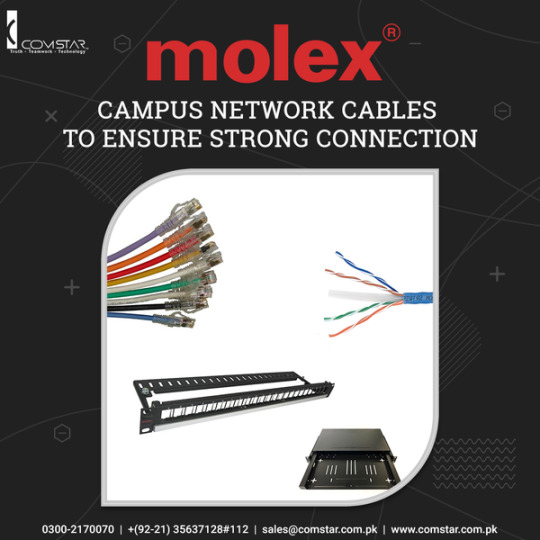
Are you looking for cables that operate at high-speed transmission systems? PowerCatPVC Cables are an ideal pick for you in this regard.
0 notes
Photo

Most people take for granted technology now a days. But few know goes beyond the image, sound or favorite song in their electronic devices. What makes digital signals clear, sharp and unchanged is the cables that transfers that signal. Fiber optic is a marvelous discover. It allows the information to travel far and wide without much distortion. Thank a fiber technician for your favorite show, song or device. #ismaelgonzalezphotography #fiberoptic #coaxialcables #digitalsignals #communication #internet #digitalimage ##macrophotography #stockphotographer #productphotographer #stockphotography #canon #canonlenses #future #cable #fiberopticconnectors #share #coppercables #phonecables #data #datatransmission #datatcables https://www.instagram.com/p/BwtOwJmBjJt/?utm_source=ig_tumblr_share&igshid=15dacm8ltds3d
#ismaelgonzalezphotography#fiberoptic#coaxialcables#digitalsignals#communication#internet#digitalimage#macrophotography#stockphotographer#productphotographer#stockphotography#canon#canonlenses#future#cable#fiberopticconnectors#share#coppercables#phonecables#data#datatransmission#datatcables
0 notes
Text
Submersible Flat Cable Blue
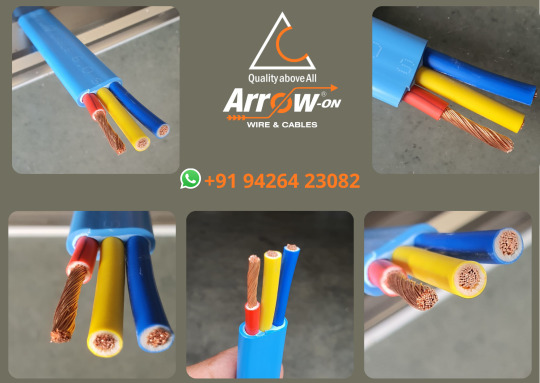
3 notes
·
View notes
Text
Submersible Flat Cable Blue
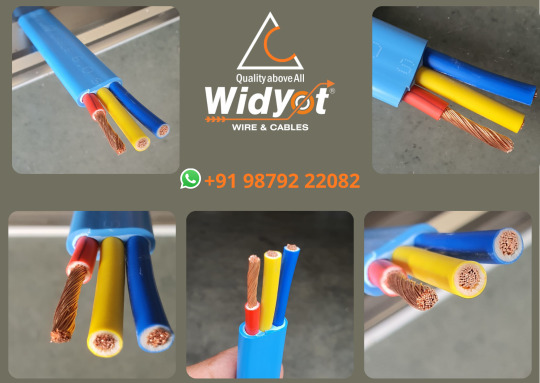
2 notes
·
View notes
Text

0 notes
Link

#AerialBunchedCablesSuppliers#LTControlCables#LTCopperCable#LTCopperControlCable#LTCopperPowerCable#AerialBunchedCablesManufacturers#LTPVCCables#LTPVCCableManufacturers#CopperPowerCable#LTPowerCableManufacturers#CopperCables#LTPowerCableSuppliers#LTPowerCables#FlameRetardantLowSmokeCablesManufacturers#Flame Retardant Low Smoke Cables Suppliers#FRLSCables
0 notes
Text
Submersible Flat Cable Blue
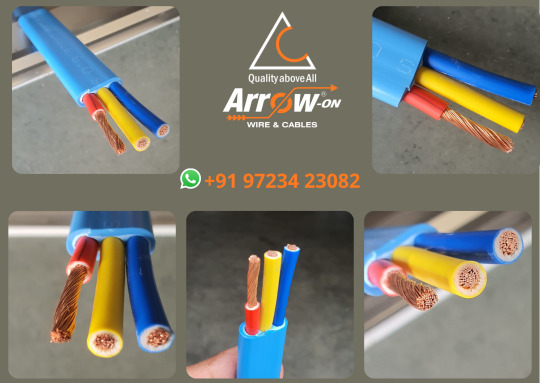
1 note
·
View note